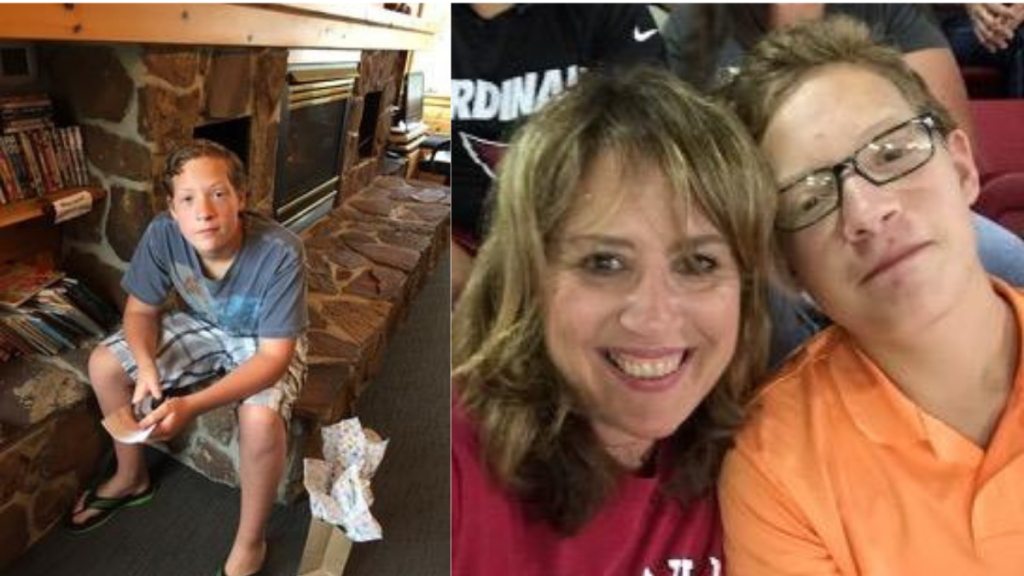An Interview with Kat Mische Elle
Francine Sumner, please share with us your story of strength and hope.
I was born in Mount Vernon, New York, and I lived there with my mom and my sister. My dad left when I was about three and a half years old, and my sister was about six weeks old. So, it was just the three of us. There was mental illness on both sides of the family. My mom struggled with mental illness pretty much throughout my entire life. She had a lot of ups and downs. My dad was mostly absent, and my sister struggled from the time she was born with various mental health issues as well.
As I went through my elementary school years, it became apparent to me that I had to be the good child. Because I was the calm one in the family, I was expected to always have good grades, to not cause problems, and to be the one who didn’t disturb anything. It was a lot of pressure, but I lived up to it as best I could. I did well in school. I was a ballet dancer at that time, and I held it together. My mom struggled being a single parent. My sister gave her all kinds of trouble. These were certainly painful and difficult times for all of us.
I remember being so sad that I lived in what I thought was such a broken family. I thought all the families around me were, you know, ‘perfect’. That’s how I visualized them. And they all lived their happy lives. I struggled because I didn’t have that.
I remember talking to my aunt who was a psychologist, and she said, “You will be part of a happy family someday. You’ll just be in a different position in the family. You’ll be the mom.” I held on to that. I wanted to be a mom in a happier family and give my kids a different childhood than I had.
As an adult years later, I had a great job at American Express, but I never felt like I was really living my passion. I thought, “I’m working hard for a company. But what am I doing for the world?” So, I decided at that point that I really wanted to be an early childhood educator. I wanted to be able to help shape children from their earliest ages in the most positive ways. I wanted to be the person I needed when I was younger.

I was transferred to Arizona with my American Express job when I was 30 and that’s where I met my first husband. We worked together and he was successful. He was what I thought a stable, financially strong, and independent man looked like. He had just bought his first condo and I thought, “Oh, here it is, I’m going to marry this guy, and I’m going to start a family.” We got married, and I stopped working. After my first two children were born, I began my career in early childhood education. I also became a youth advisor and taught religious school as well. I really focused my time on youth. We didn’t have any family nearby. But we had lots of friends who had kids, and they all became like cousins. We had big family outings, big family get-togethers, and holidays. I was where my aunt told me I would be. I was in a happy family. I was the mom and not the kid. I was able to give my kids what I thought I didn’t have. I really wanted to extend that to all youth. I always wanted to be the person for kids that I thought I needed.
I’d had two kids, Jacob, and Gabrielle. And then, Zachary wound up being a bit of a surprise, and he was kind of teased about that. I remember sitting with him the day of his bar mitzvah and telling him, “You know, you are meant to be here.”
About a year later, after his bar mitzvah, he was fourteen, and his dad and I had a conversation where we finally confronted what was happening in our lives outside of being parents. We discussed that when Zachary got out of high school, it would be time for us to go our separate ways. My husband needed to live the life that he was meant to live and I needed to find my own happiness. After digesting this conversation, my husband felt that he needed to move on sooner rather than later and took up residence in California. While the kids were supportive of the split, they worried about their dad being so far away. This created an enormous amount of stress on the kids, especially Zachary.
Before Zachary’s struggle with mental illness, he was typical kid. He was very kind. He loved animals and was a huge animal advocate. He loved the Rubik’s Cube. He was great at math. He was a gifted student. He was the kid who brought a welcome basket to somebody who moved in next door. He always brought his friend’s homework to them if they were sick. If his teacher was having a bad day, he’d bring her a candy bar. He was just that kid.

Right around the end of his first semester of sophomore year, he had his first breakdown. It was a crazy night in our house with three kids and a single mom. My daughter was getting ready to go on a birthright trip to Israel. So, her clothes were strewn all over my bed. Jacob, my oldest, wanted to know what was for dinner, the dog was barking, and Zachary comes storming in. And he jumps on the bed, and he says, “I need help studying for my final right now.” And Gabrielle said, “Hey, wait your turn. Get off my clothes!” I said, “Zachary, let me just finish up here and get dinner started. Get the dog fed, and I will come help you.”
He got up and went across the house to his room, and he slammed the door. He sent me a text in all caps that said, “DON’T BOTHER.” I knew something wasn’t right. I went across the house, and I knocked on his door. He wouldn’t answer me. He wouldn’t text me back. He wouldn’t answer his phone. I said, “Zachary, I’m going to sit right outside your door. I will wait for you. When you’re ready, I’m here to help you. I’m sorry. I didn’t realize it was such a priority.” About 45 minutes later, I heard a crash, and that was his first attempted suicide.
When he came out, he was hysterically crying. He said, “Mom, why do I care so much about everybody else, but nobody cares about me?” Now, that wasn’t the truth. But that’s how he was feeling. It was awful. I had no idea what to do, where to start, where to go, who to call. And neither did he. We spent a long time talking that night. He told me about his friends, who he had been friends with since kindergarten — a great group of boys. They would have lunch together every day and they would tease each other. One day, he happened to be the butt of the jokes. Zachary took it personally. He didn’t know why he was feeling differently than he had before. He didn’t realize it was mental illness, he didn’t realize there was something going on. He never went back and ate with them again.
So, for three months, he had been sitting in the media center by himself having lunch alone. No one noticed that all of a sudden, a kid who hadn’t been eating there before was isolating himself. His friends didn’t reach out to him. They didn’t realize that his feelings were hurt. They probably thought he had someplace else to eat lunch. Or maybe he joined a club. Zachary thought something was wrong with him. He never said anything. It manifested for three months until that night. The next morning, he did go to school, he finished his finals. Zachary and his brother and sister were scheduled to get in the car and drive to California to see their dad for the holidays. As a mom who had never dealt with a child with severe mental illness like that, I didn’t know what to do. I didn’t know if I should I let him go? Shouldn’t I let him go? What was the right thing to do?
I remember sitting on my bed thinking, now what? I must get him help. I didn’t know where to start. I called a couple of people that I knew in the field. I got a few names. They both happened to give me one name in common. So, that’s where I started. The therapist was in our insurance, and she was happy to see him in May. This was December! I finally found somebody who wasn’t in our insurance. This therapist was $600 for the first visit, $400 a week after that. It wasn’t financially sustainable.
Zachary came back from the visit, worse off than when he left. He was in a terrible depression. He couldn’t go back to school. He literally couldn’t leave my side. He moved into my room. He was on medication, and it wasn’t working. He was getting worse. It was suggested he went into inpatient care right away. Zachary was happy to do that. He just wanted his life back. He wanted to feel better. We left the doctor’s office, and we went right to the hospital. They checked him in and he was there for two weeks. He said, “I’m going to do whatever it takes in this hospital because I’m not coming back here.” And he worked very hard.
When he got out of the hospital, it took him two days to tell me that when he turned his phone on, he had no texts, no voicemails, no emails, nothing. He felt invisible. He felt alone. He felt like nobody cared. Now, my phone was blowing up. I had to show him my phone and that everybody was reaching out to me, even though nobody had reached out to him. And the reason for that is because of stigma. It’s not that people didn’t care. It was that people didn’t know what to say. So, they said nothing. But for him, it felt isolating.

When we finally did see the last provider in May, Zachary’s therapist asked him how he was doing. He said, “You know, I’m doing great in DBT (Dialectical behavioral therapy). I really enjoy it. And I’m learning so much, (The therapy was helping him focus on his life and how he could create the one he wanted).” Zachary continued, “I love my business — dog walking and pet sitting. It’s really helping me to feel good about what I do and feel good about myself. It is giving me a purpose, but I still have a lot of anxiety at school and at Temple.” His therapist increased the medication a bit. And over the next few weeks, I noticed him swinging the other way. Suddenly, he became really manic. He cut his hair, and he was wearing new clothes. He was buying gifts for people and he just didn’t seem himself anymore.
One night, he came crying to me and he said, “Mom, I’m not feeling well, again. I feel like I’m manic. I looked it up. Can you take me to the store and help me return things that I don’t need? My thoughts are racing, and my dreams are vivid, and I can’t contain myself.” We happened to have an appointment with his provider the next day and she said, “You know, this is only my second time seeing him.” (She was the fourth provider we’d seen in a six-month period). She suggested, “Maybe he needs to be on a mood stabilizer. But let’s give it a few weeks.”
The night that he died; he was watching a client’s cat. His client was in Minnesota that day and he had inadvertently locked the cat behind a door and had to break the door to get the cat out. Little did we know, he had gone back and forth to Home Depot all day trying to fix that door. He couldn’t get it fixed and he was in a very manic state because she was coming home. He panicked. At about 8:30 that night, I texted him and I said, “Zachary, it’s time to come home.” He replied, “Give me about a half-hour, just want to make sure the house is perfect for her, and I’ll be home.” Thirty minutes later, he sent a text to eight of us that said, “I love you all so much. Thank you for everything you’ve ever done for me. You’ve all been so good to me.” I jumped up. I called him, and he answered the phone, I said, “Zachary, what is going on?” He said, “Hang up, Mom, I don’t want you to hear this.” And I just knew. By the time we got there, he was gone.
He had found a loaded gun in this woman’s house. And he took his life in a very manic moment. I’m not ashamed of him. I’m not ashamed of his illness. I’m frustrated that we didn’t know where to get the help that he needed. But he died of mental illness. He died by suicide. He was sick.
There is such a stigma around mental health but not around physical health. We need to be able to shatter that stigma. Start the conversations, help ourselves, and help each other. Find out where the resources are, become educated, and start the difficult conversations so that we can reduce suicide in youth and the community that supports them. After a couple of months, I knew that we needed to create an organization and create a program. I created a nonprofit called, The Kid in the Corner.
Tell me about the ‘Penny Pledge’?
Kid in the Corner developed a strategy to target youth and to target their peer-to-peer relationships. That’s how the penny pledge came to be. Zachary was a coin collector and he had lots and lots of pennies. We drill holes in them, (one of the local high schools does this for us). Every time somebody goes through our program, they take what’s called the “Penny Pledge,” which is an individual call to action. It does three things: It teaches kids how to reach out to each other, how to support each other, and why it’s important to reach out to each other and recognize each other and support each other. It teaches kids to take care of their own mental health. To know that it’s okay to not be okay and to have the strength to ask for help. It teaches kids how to be that safe and caring person. If somebody comes to them and says, “I want to hurt myself. I’m struggling. I’m feeling hopeless.” What resources can they use? How can they create an empathetic statement? We bundle it all together on a platform of kindness. The kids wear their pennies as a constant reminder of their pledge.
Our mission at Kid in the Corner is to shatter the stigma that surrounds mental illness and to support the kid in the corner, whoever that may be. And we do that by using three pillars. We educate and spread awareness, we promote contagious kindness, and we connect the community to resources. It is so important that each and every person who takes the penny pledge understands that it’s our responsibility to shift to a place of kindness, to make sure that we are reaching out to others anonymously, face to face, in grocery stores, while driving, anywhere. Be kind, reach out, and also make sure that we are taking care of our own mental health, knowing that it’s okay to not be okay. We’re not supposed to be okay all the time.
Where do you focus your gratitude?
You know, a life of happiness and gratitude is all good but it’s important to feel what we feel and work through it. And to know how to support somebody else! If somebody comes to you and says, “I’m struggling,” help that person get to the next best-supported level.
What is the focus for Kid in the Corner for the rest of the year?
In 2022 our goal is to expand throughout Arizona and then branch out into other states so that mental illness is no longer stigmatized and a kid in the corner anywhere can find support.





